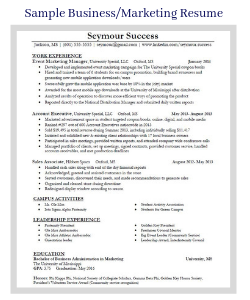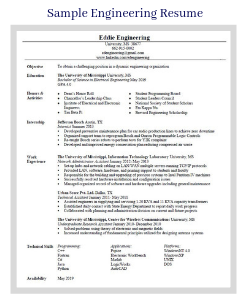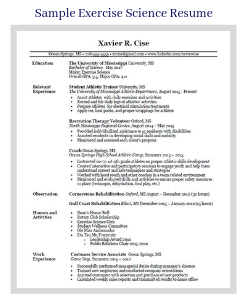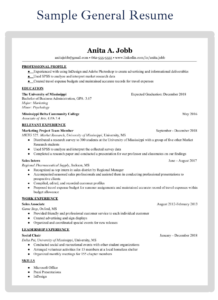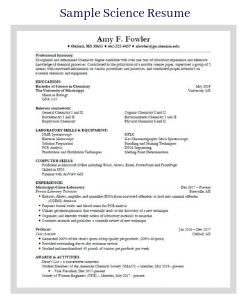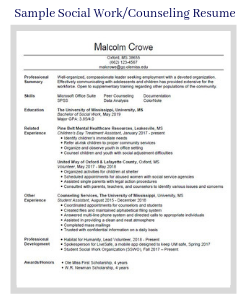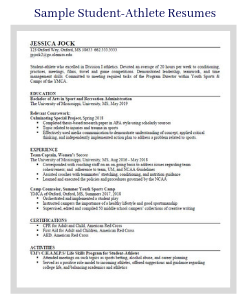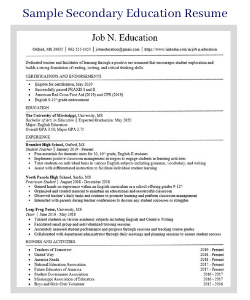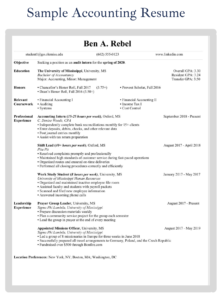What is a Resume?
A resume is a document used to introduce yourself to an employer and market your skills, accomplishments, and educational background relevant to the position. On average, employers spend only 7-20 seconds reviewing a resume, so it is important to create a document that aligns your best qualifications with the position you are seeking.
Resume Formats
Chronological: Showcases your education, activities, and work history. Highlights your most recent experiences first, followed by additional information in reverse chronological order.
Functional: Draws attention to key skills, lessening the emphasis on dates of graduation or employment. Typically used by those with diverse work experiences or noticeable gaps in employment history.
Chrono-Functional or Combination: Maintains the emphasis on skills and notable accomplishments, including a brief section outlining work history and employment.
How to Style Your Resume
The style and layout of your resume are incredibly important. Remember, employers usually only take 7-20 second to look over your resume. So, formatting, look, organization, and easiness to read is crucial to getting your resume noticed.
- Formatting
- Avoid pre-made resume templates because they limit your ability to change the style. Instead, look through example resumes, find one you like, and build your own.
- Avoid large blocks of text, it makes is tiring and difficult to read.
- Your resume should only be 1 page. However, this can vary depending on how much relevant experience you have.
- Do not reduce margins to less than 0.5″ because, when printed, it can cut off parts of your resume.
- Fonts
- The font you choose is important.
- Do not change fonts in your resume. Find one you like and consistently use it.
- Make sure your font has good readability!
- Keep your font size between 10-12 points. Do not compress the space between your letters; it reduces readability.
- Use Bold and Italics to highlight important facts. Do not overuse them, and be consistent in where and how you use them.
- Sharing your Resume
- Once you are finished, save a copy of your resume as a PDF document so your formatting does not change when you submit it online
- When you print your resume, make sure to print it on nice Resume paper in white or off-white. (You can print on resume paper in the Career Center for just 10 cents a page!)
- When you print your resume, use a laser printer so there are no unwanted lines or streaks.
- Never fold or staple your resume.
What to Include on Your Resume
Your resume should clearly and concisely highlight your most valuable experience to your employer. It is NOT a list of every job you have ever had. The following sections can be used to categorize your qualifications, work history, and activities.
Demographic Information
- Include full name, address (city/state only), phone number, professional e-mail address
- Optional: web address to a personal resume/portfolio website you have created or professional social media link (i.e. LinkedIn)
- Be sure your phone number has an active, professional voicemail message!
- Once you are close to graduation, it is better to include a professional e-mail that is not your student e-mail. Your student e-mail will deactivate not long after graduation and, if an employer tries to contact you using that go.olemiss.edu e-mail, they will not be able to contact you
- Remove hyperlinks from e-mail
Professional Profile, Summary of Qualifications, or Objective
- Professional Profile or Summary of Qualifications should mirror the job description
- Objective statements, if used, should be specific and concise
Education
- Include official degree name, university name, location (city/state), graduation date, and major(s)
- Can include minor(s), emphasis area(s), and specialization/concentration(s)
- Place your education after your experience if you have been in the workforce for more than 5 years
- If the degree you earned is the most relevant or impressive detail of your education section, highlight it; if the school you attended is the selling point, emphasize it
- Be sure to include the correct degree name (find it the online catalog, your school website, or your transcript) and write it out; do NOT use abbreviations
- If you have not yet graduated, list your expected graduation date
- GPA: only include if it is a 3.0 or higher; alternatively, you can list your major GPA instead of your cumulative
- Can list Study Abroad experience (see Sample Resume with Study Abroad)
- If you attended multiple institutions, only list the institution where you received your degree
Experience
- List job/position title, organization/company name, dates employed, and location
- List in reverse chronological order (most recent to oldest)
- Give the most weight to your most recent professional positions. Each entry should contain a minimum of 3 bullet points
- Begin each bullet point with a Power Verb! (Click to see our Power Verbs handout)
- Use numbers, percentages, and specific details to increase your impact on the organizations where you have worked. Always ask yourself how you helped the organization and insert the numbers that demonstrate that impact. For example:
- Good
- Instructed a group of elementary through middle school students in athletics
- Better
- Instructed 60-70 first through ninth grade athletes on proper athletic skills development
- Good
-
- Good
- Develop online marketing campaigns to increase client awareness
- Better
- Develop and manage online marketing campaigns to effectively drive brand awareness, engagement, and traffic to Twitter, Instagram, and Facebook pages
- Good
- Highlight experiences and skills that match the employer’s needs (refer to the job description!)
- Consider including transferable skills (See our Transferable Skills handout)
- May divide into Relevant Experience or Other Work Experience or Leadership Experience
- Experience does not have to be paid! Can include relevant internships, volunteer experience, class projects, research projects, etc.
Skills
- Job-related skills (qualitative/quantitative research, social media marketing, APA Style)
- Technical skills (Adobe Photoshop, SPSS, Java, Microsoft Office)
- Languages-include fluency (Conversational Spanish, Fluent in French)
- Certifications (CPR, Basic First Aid, CPA)
- Remember, listing a skill implies that you have more than basic knowledge of that task or program
Other Categories
- Honors, Awards, Achievements
- Relevant Coursework
- Professional Organizations
- Campus/Community Involvement
- Volunteer Experience
- Leadership Experience
- Internships, Observation, or Shadowing
- Academic, Capstone, or Senior Projects
- Geographic Preference
- Availability
What Not to Include
- Birth Date – check your e-mail address!
- Social Security Number
- Photos
- References on your resume (need to be in a separate document! See our References page)
- “References Available Upon Request” (they should always be automatically included with your application)
Example Resumes
Drop your resume or cover letter off at the front desk in the Career Center in 303 Martindale or e-mail your resume to office@career.olemiss.edu, and have it critiqued and ready for you to pick up within 24-72 hours.
